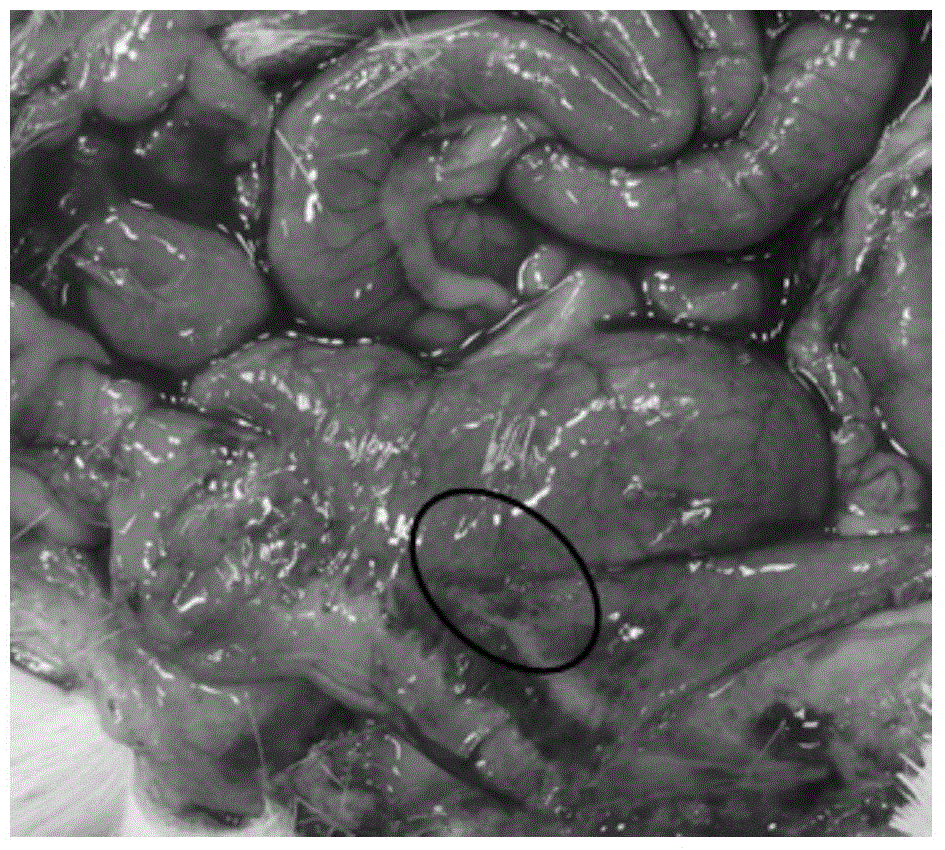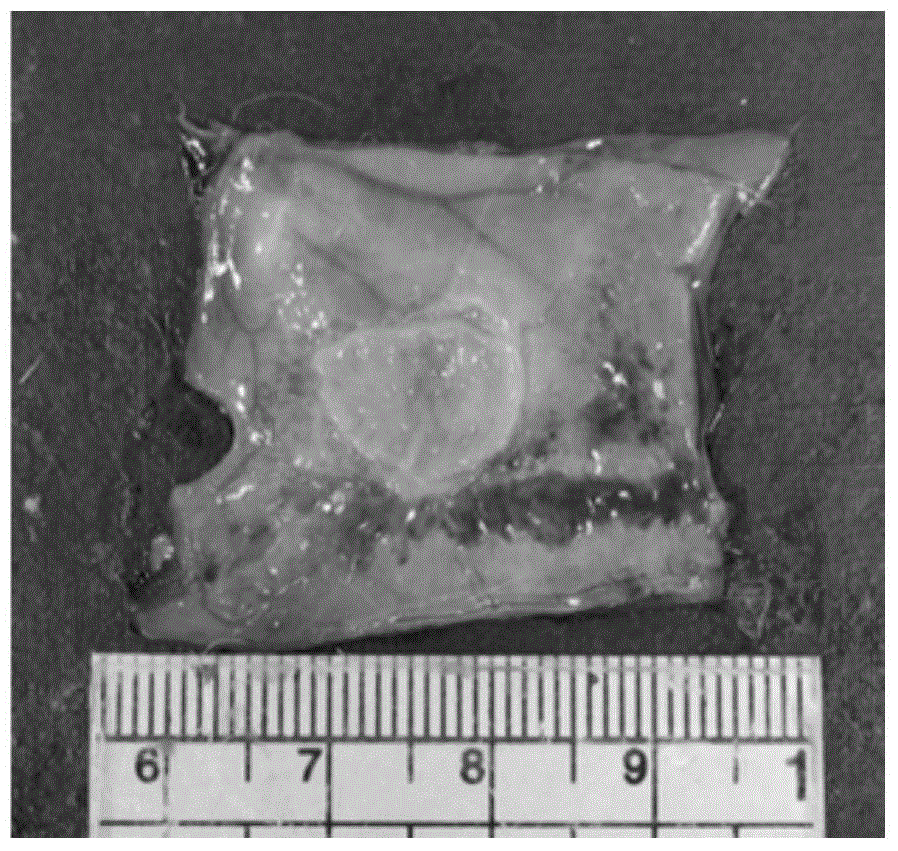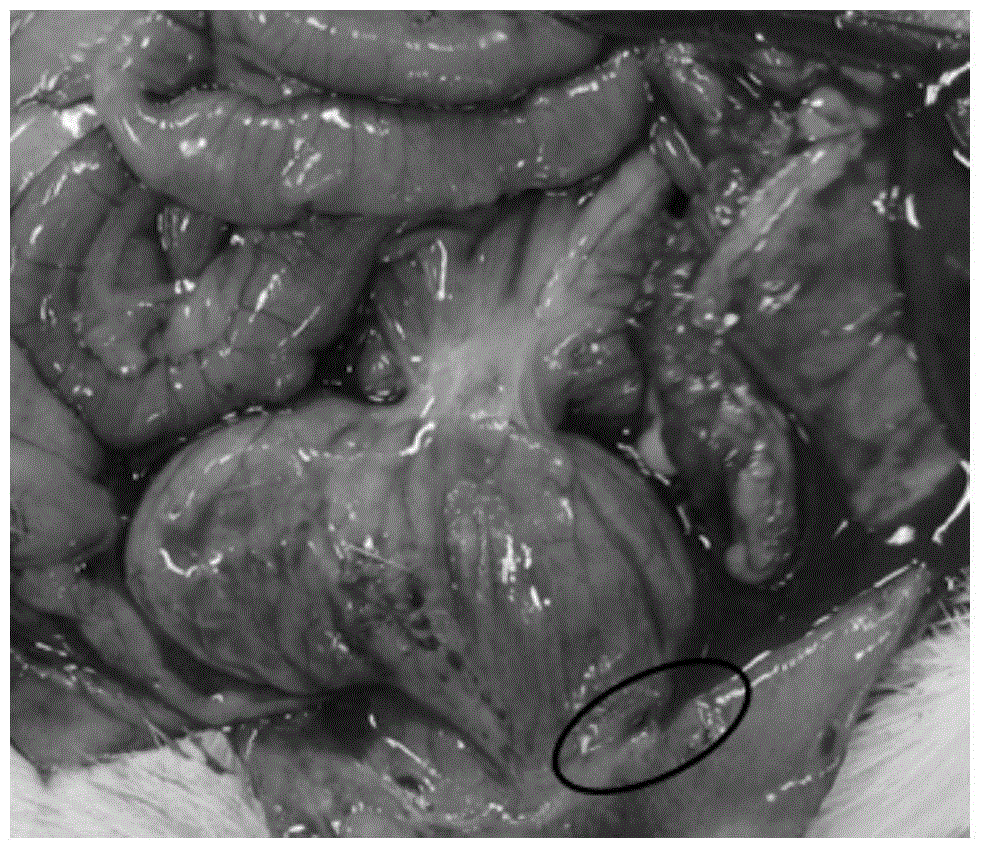Preparation method of composite film for preventing postoperative adhesion
A composite film and post-operative technology, applied in the fields of surgery, medical science, etc., can solve the problems of limited anti-tissue adhesion, large clinical dosage, and high cost, and achieve the effects of preventing organ or tissue adhesion, promoting wound healing, and preventing tissue adhesion
- Summary
- Abstract
- Description
- Claims
- Application Information
AI Technical Summary
Problems solved by technology
Method used
Image
Examples
Embodiment 1
[0037] A kind of preparation method of the chitin / hyaluronic acid composite membrane that prevents postoperative adhesion, described preparation method comprises the steps:
[0038] ①Mix chitin and saline to obtain 4wt% chitin saline solution, mix 4wt% chitin saline solution with 10% (V / V) acetic acid, and let stand at 4°C for 48h to obtain solution I;
[0039] The volume ratio of the 4wt% chitin saline solution to 10% (V / V) acetic acid is 1:0.85;
[0040] ② Mix hyaluronic acid and normal saline to obtain a 0.5wt% hyaluronic acid normal saline solution, and let it stand at 4°C for 48 hours to obtain solution II;
[0041] ③ mixing hydroxyethyl starch with physiological saline to obtain 2wt% hydroxyethyl starch physiological saline solution III;
[0042] Mix solution Ⅰ, solution Ⅱ and solution Ⅲ at a volume ratio of 1:1:1, add glycerin to obtain 5wt% solution Ⅳ, stir for 10 minutes, sonicate for 2 minutes, and stand at 4°C for 24 hours to obtain a film-forming solution. Add 20 ...
Embodiment 2
[0044]A preparation method of a chitosan / hyaluronic acid composite film for preventing postoperative adhesion, the difference from Example 1 is that chitosan is used instead of chitin.
Embodiment 3
[0046] The difference between the preparation method of chitin polysaccharide / hyaluronic acid composite film for preventing postoperative adhesion and that of Example 1 is that chitin polysaccharide is used instead of chitin.
PUM
| Property | Measurement | Unit |
|---|---|---|
| molecular weight | aaaaa | aaaaa |
| molecular weight | aaaaa | aaaaa |
| molecular weight | aaaaa | aaaaa |
Abstract
Description
Claims
Application Information
 Login to View More
Login to View More - R&D
- Intellectual Property
- Life Sciences
- Materials
- Tech Scout
- Unparalleled Data Quality
- Higher Quality Content
- 60% Fewer Hallucinations
Browse by: Latest US Patents, China's latest patents, Technical Efficacy Thesaurus, Application Domain, Technology Topic, Popular Technical Reports.
© 2025 PatSnap. All rights reserved.Legal|Privacy policy|Modern Slavery Act Transparency Statement|Sitemap|About US| Contact US: help@patsnap.com



